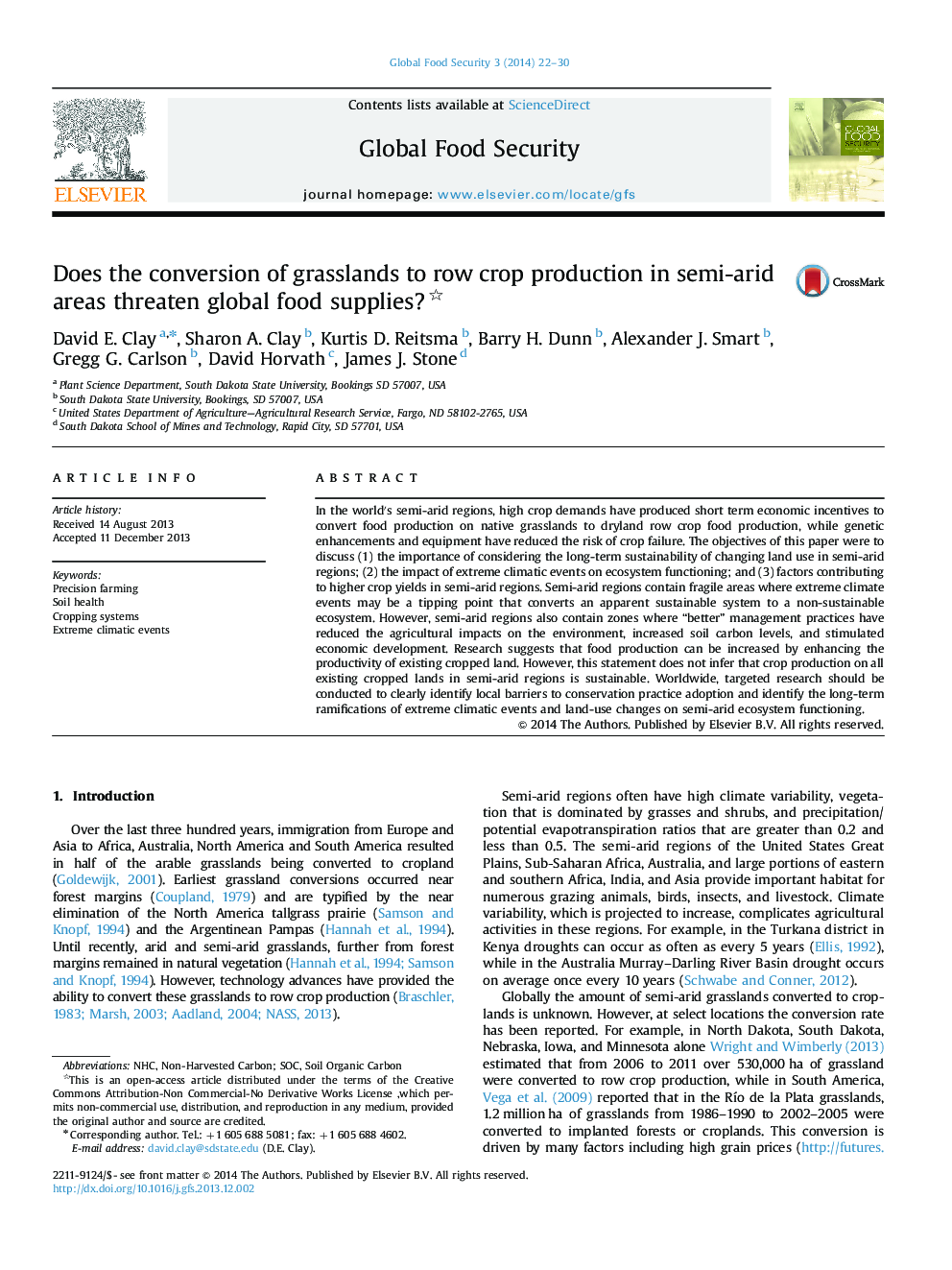| Article ID | Journal | Published Year | Pages | File Type |
|---|---|---|---|---|
| 10502303 | Global Food Security | 2014 | 9 Pages |
Abstract
In the world's semi-arid regions, high crop demands have produced short term economic incentives to convert food production on native grasslands to dryland row crop food production, while genetic enhancements and equipment have reduced the risk of crop failure. The objectives of this paper were to discuss (1) the importance of considering the long-term sustainability of changing land use in semi-arid regions; (2) the impact of extreme climatic events on ecosystem functioning; and (3) factors contributing to higher crop yields in semi-arid regions. Semi-arid regions contain fragile areas where extreme climate events may be a tipping point that converts an apparent sustainable system to a non-sustainable ecosystem. However, semi-arid regions also contain zones where “better” management practices have reduced the agricultural impacts on the environment, increased soil carbon levels, and stimulated economic development. Research suggests that food production can be increased by enhancing the productivity of existing cropped land. However, this statement does not infer that crop production on all existing cropped lands in semi-arid regions is sustainable. Worldwide, targeted research should be conducted to clearly identify local barriers to conservation practice adoption and identify the long-term ramifications of extreme climatic events and land-use changes on semi-arid ecosystem functioning.
Keywords
Related Topics
Life Sciences
Agricultural and Biological Sciences
Agronomy and Crop Science
Authors
David E. Clay, Sharon A. Clay, Kurtis D. Reitsma, Barry H. Dunn, Alexander J. Smart, Gregg G. Carlson, David Horvath, James J. Stone,
